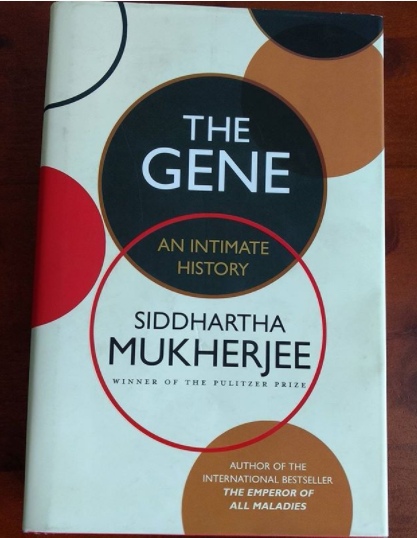Siddhartha Mukherjee
“As our island of knowledge grows, so does the shore of our ignorance.” probably best describes this book for me. My understanding of the subject grew manifold after reading this book, but I also realised how little we know!
Perhaps the one question we all seek an answer to is “Why are we here?”. There probably is no universal answer to that question, as science and religion like to approach it in different ways. Personally, I think that purpose is either just a narrative in hindsight, or a story we build to create meaning in our lives.
Meanwhile, science has raced ahead of religion in explaining “how are we here?” In terms of the two building blocks that have existed before us – atoms and genes – as well as the influence of the one we created – byte. This book is the story of what the author describes as “one of the most powerful and dangerous ideas in the history of science: the gene, the fundamental unit of heredity, and the basic unit of all biological information.” Indeed, it is the history of this unit – from its presence in a human’s mind as an abstract idea to the human attempts to write and rewrite it – that makes up this book.
In just under 500 pages, the author takes us through the various experiments and discoveries that have led us to our current understanding of the gene, and how everything from gender and sexuality to other facets of personality and choices are influenced by it. One important aspect of this is how he highlights the individual experiments and the influence of those results. For example, Rosalind Franklin in the context of Maurice Wilkins, Watson and Crick. The heroes and their heroics owe a lot to many whose names might be forgotten later.
As he constantly reminds us, it is obviously not only the gene, but the environment, triggers and random chance that make us who we are, and drive our future. (I was fascinated by the idea of the epigenome) Genes are after all recipes, and not really blueprints. That however should not take away from the phenomenal impact they have in our lives. The author quotes a character from GATTACA who says “my real resume is in my cells”.
It is humbling to know that we share a large percentage of genes with the most basic of lifeforms. It is also amusing to note that while long back women were only considered as containers to carry forward the genetic lineage, we now know that a woman is the origin of our mitochondrial lineage – the Mitochondrial Eve! And while that initial understanding might evoke scorn now, it is important to understand that what we know now is a drop compared to what we don’t!
The last part of the book is the author’s perspective on where this might lead us to in the future. It raises important questions on what would be the limits to which we would play with genes and how that would impact not just the individual but society and culture as well. Would we completely understand what he calls our ‘fate map’? (In terms of several illnesses, we can actually see parts of it already and have the capability to deal with it safely) What would be our definition of a ‘normal’ human in the future?
Conceptually, the history and the future are both fascinating and kudos to the author for making it engaging enough for a non-scientist such as me. The narrative is largely chronology based, though it does move into themes later in the book. The back and forth in timelines I found to be disconcerting only in the beginning.
The style has everything from elegant prose (“men like this seem to turn up every day, appearing out of nowhere off the streets and walking unannounced into houses, stepping casually over thresholds into their past.”) to puns! (“He drew the line at mice, but didn’t mind giving peas a chance.”) There is a lot of lucid description of places and people that helps bring out the mood and the setting where key discoveries were made, crucial discussions were initiated, and consensus reached.
And then there’s the sensitivity – you notice it right at the beginning when the author introduces the personal angle. It is also manifest when he writes the human stories to help us understand the relevance and significance of a scientific experiment or discovery.
There has been some criticism in terms of accuracy and perspective, but I think it’s inevitable when the scope of the book is so vast. Even if he does lose a bit there, I’d say that it is more than compensated by the accessibility he has brought to the subject with this book. The big canvas allows us to see the future with the context of the past and through the lens of all the forces at work.
The book left me awed at what nature has achieved, everything humans achieve will only be a subset of that!

